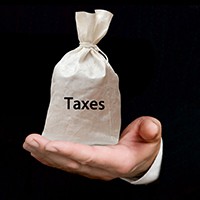Last updated: March 29 2016
Tax Breaks: Use Them Before You Lose Them

In the past year, numerous tax advantages have been altered; if nothing else, the March 22, 2016, budget reminds us again never to look a “tax gift horse” in the mouth, especially when it comes to tax-free or tax-deferred investment opportunities.
Soon to be history is the opportunity to switch from one mutual fund to another on a tax-free basis within a corporate class structure. Further fine tuning has limited the advantages in principal protected notes linked to underlying securities. If held to maturity, these notes generated fully taxable interest income. However, if the notes were sold prior to maturity on the secondary markets, any returns were given capital gains treatment. That preference is ending with the opportunity to switch funds—on September 30, 2016. After that date, all returns from principal protected notes will be taxed as interest income.
But perhaps the biggest regret for investors who are retirees is the capping of the TFSA investment limit to $5,500. This change occurred late in 2015. Had the $10,000 ceiling been maintained, investors who maximized their contributions would have accumulated $91,000 in principal in their TFSA by 2020. However, under the new rules effective in 2016, a maximum of only $68,500 can be accumulated in the same period, a difference of $22,500, as shown in the chart below.
| Year | TFSA New Contribution Room | Accumulated Maximum Room | Noteworthy |
|---|---|---|---|
| 2009 | $5,000 | $5,000 | |
| 2010 | $5,000 | $10,000 | |
| 2011 | $5,000 | $15,000 | |
| 2012 | $5,000 | $20,000 | |
| 2013 | $5,500 | $25,500 | Indexed increase |
| 2014 | $5,500 | $31,000 | |
| 2015 | $10,000 | $41,000 | Higher limit, deindexing |
| 2016 | $5,500 | $46,500 | Lower limit, indexing |
| 2017 | $5,500 | $52,000 | |
| 2018 | $5,500 | $57,500 | |
| 2019 | $5,500* | $63,000 | |
| 2020 | $5,500* | $68,500 | Vs $91,000 (-25%) |
* The limit will increase to $6,000 once inflation brings the CPI over 115% of the 2009 level
The current maximum TFSA contribution over this period is a reduction of 25% from the increased limits announced and implemented by the previous Conservative government. In other words, investors have lost 25% in potential tax-free accumulations to fund their retirement—ground that is very difficult to make up when current returns barely beat inflation and taxes.
 |
The moral of this story? Never look a tax gift horse in the mouth; in other words, use tax preferences before you lose them.
Evelyn Jacks is a best-selling Canadian author of 52 books including her latest, Family Tax Essentials. Evelyn is the Founder and President of Knowledge Bureau, a national educational institute. To learn more about professional tax preparation and tax-efficient wealth management, see www.knowledgebureau.com.





